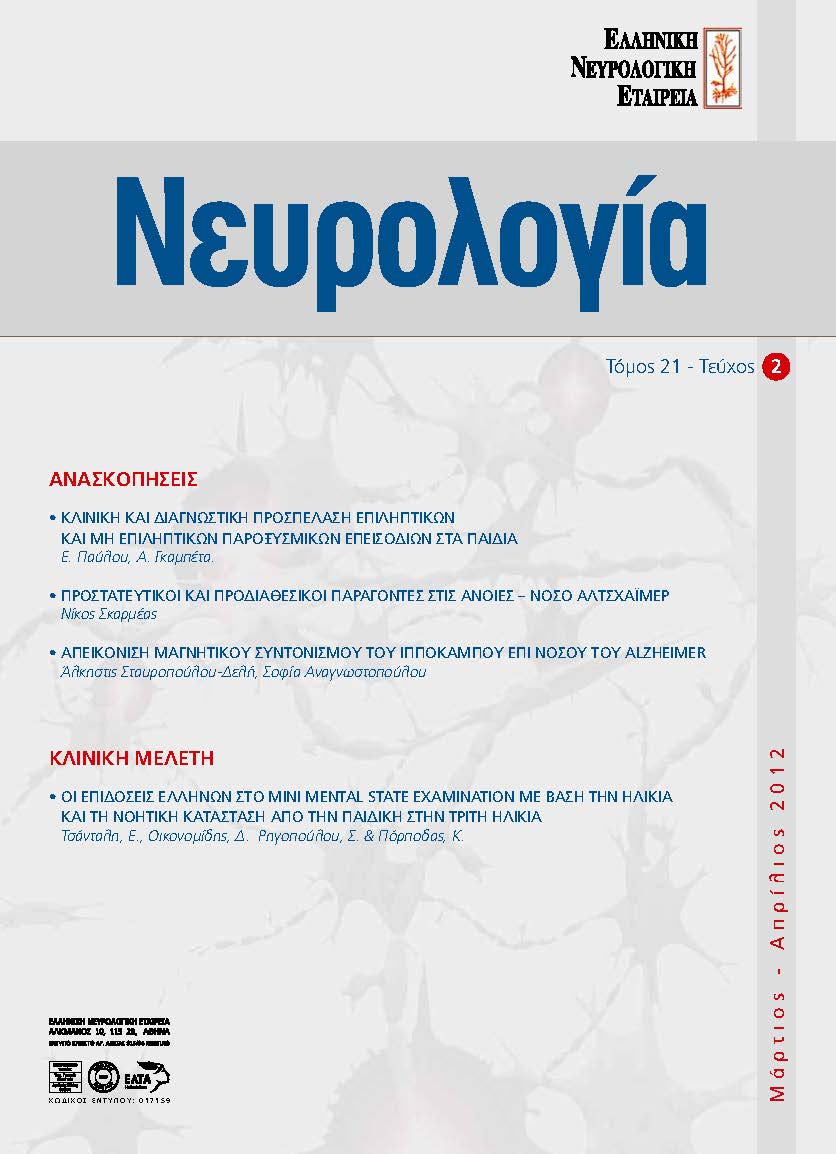Magnetic Resonance imaging of the hippocampus in Alzheimer’s disease
Keywords:
hippocampus, Alzheimer’s disease, mri, volumetry, early diagnosisAbstract
A 60% of all dementia cases suffer from Alzheimer’s disease, while there is no definite diagnostic test for the disorder. the current effort for the development of drugs that will change the illness course intensifies the urgency for an early diagnosis that will render the effective treatment of the disease possible. neuroimaging techniques aim at the accurate detection of specific changes related to Alzheimer’s, at certain brain regions. due to its crucial role in memory, the hippocampus is one of the primary regions of interest. the first mris used for total hippocampal volumetry on Ad patients revealed atrophy of the hippocampus. this finding however is not specific for Ad, as it can also be caused by other types of dementia involving the temporal lobe. Specific morphometric findings include focal atrophy of the lateral hippocampus, the hippocampal fields and the apical neuropil. A decrease in hippocampal volume is also strongly correlated with a reduction in gray to white matter tissue contrast in areas of hippocampal efferent connection. recent studies are exploring the diagnostic potential of new mr imaging modalities. 1h-mrS, which allows a direct in vivo assessment of the neurochemical profile of the hippocampus, has been proved to be useful for an early diagnosis. in addition, fmri, by providing unique information about real-time hippocampal activation, may become an adjunct to clinical evaluation in the near future. finally, dWi and dti, mr modalities focused on molecular diffusion and anisotropy, can provide an early diagnosis as well as differential diagnosis of Ad.


